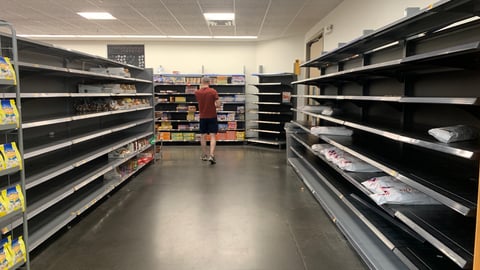E-Commerce to Account for 21.5% of Total Grocery by 2025
Online grocery sales will reach an estimated $250 billion by 2025, which is more than a 60% increase over pre-pandemic projections, and more than a fifth (21.5%) of all grocery sales. These numbers are according to a June survey from Mercatus of 60,000 American shoppers across approximately 20 states.
During the pandemic, 43% of shoppers said they have shopped online in the last six months compared to just 24% two years ago. The top three reasons shoppers have shifted to online shopping are COVID-19 concerns (62%), convenience (62%) and time savings (42%).
Additionally, 66% of all respondents who shop online rate real-time inventory visibility as very important. Compared to brick and mortar, there is far less loyalty for pure-play online retailers, with only 8% of shoppers switching to an online-only operator such as Amazon.
While the research found that after the pandemic 40% of online shoppers are likely or very likely to continue to purchase via online channels, 78% of all shoppers still prefer to visit a brick-and-mortar grocery store either to shop in store or for curbside pickup. Despite the high growth in online adoption, most grocery shoppers still profess loyalty to retailers and online brands that have a physical store presence.
“This comprehensive survey proves that COVID-19 has fundamentally changed the way shoppers approach their grocery options – so much so that we now expect to see online sales reach an unprecedented $250 billion by 2025,” said Sylvain Perrier, president and CEO, Mercatus. “The growth of online grocery in 2020 and its predicted long-term impact, coupled with customers’ continued loyalty to brick and mortar, makes it clear that these avenues must complement each other in creating a great customer experience across a grocer’s entire brand. In order to round out the loyalty to online channels, this data makes it clear that brands should make investments in digital functionality, especially regarding product search, discovery and product information.”
Additional survey findings include shelter-in-place norms created by the pandemic. Thirty percent of shoppers changed their preferred shopping destination. Of these shoppers, 60% have moved from one brick-and-mortar store to another, and 40% shifted to other online shopping options.
The traditional drivers of preference (proximity/location, value, product quality and convenience) have not changed during the pandemic. Shoppers, however, have been less price sensitive as product availability has taken precedence. Lack of product availability (56%) and concerns over safety protocols (33%) were the biggest reasons for customers shopping elsewhere.
Mercatus has published the survey findings in its new report titled "eGrocery’s New Reality: The Pandemic’s Lasting Impact on U.S. Grocery Shopping Behavior."
Shoppers who participated in the June research received an email directing them to an online survey of over 50 questions in addition to demographic profile questions. The survey was in the field for a period of three weeks. Data was collected and analyzed and compared to data collected in a similar manner in the summer of 2018.





